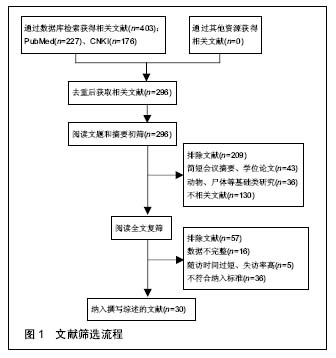| [1] Xia XP, Chen HL, Cheng HB. Prevalence of adjacent segment degeneration after spine surgery: a systematic review and meta-analysis. Spine (Phila Pa 1976). 2013;38(7):597-608.[2] Maruenda JI, Barrios C, Garibo F, et al. Adjacent segment degeneration and revision surgery after circumferential lumbar fusion: outcomes throughout 15 years of follow-up. Eur Spine J. 2016;25(5):1550-1557.[3] Helgeson MD, Bevevino AJ, Hilibrand AS. Update on the evidence for adjacent segment degeneration and disease. Spine J. 2013;13(3):342-351.[4] Saavedra-Pozo FM, Deusdara RA, Benzel EC. Adjacent segment disease perspective and review of the literature. Ochsner J. 2014;14(1):78-83.[5] Boswell MV, Trescot AM, Datta S, et al. Interventional techniques: evidence-based practice guidelines in the management of chronic spinal pain. Pain Physician. 2007; 10(1):7-111.[6] Selviaridis P, Foroglou N, Tsitlakidis A, et al. Long-term outcome after implantation of prosthetic disc nucleus device (PDN) in lumbar disc disease. Hippokratia. 2010;14(3): 176-184.[7] 赵亮,瞿东滨,陈建庭,等.腰椎间盘人工髓核置换并发症原因分析及预防策略(附4年随访报道)[J].中国矫形外科杂志,2007,15(5): 331-333.[8] Rao MJ, Cao SS. Artificial total disc replacement versus fusion for lumbar degenerative disc disease: a meta-analysis of randomized controlled trials. Arch Orthop Trauma Surg. 2014;134(2):149-158.[9] Zindrick MR, Tzermiadianos MN, Voronov LI, et al. An evidence-based medicine approach in determining factors that may affect outcome in lumbar total disc replacement. Spine (Phila Pa 1976). 2008;33(11):1262-1296.[10] 海涌.腰椎非融合技术的应用与思考[J].中国脊柱脊髓杂志,2014, 24(10):867-868.[11] 孙浩林,李淳德,刘宪义,等.棘突间动态稳定系统治疗腰椎退变性疾病的并发症分析[J].中华外科杂志,2013,51(1):35-39.[12] Li CD, Sun HL, Lu HZ. Comparison of the effect of posterior lumbar interbody fusion with pedicle screw fixation and interspinous fixation on the stiffness of adjacent segments. Chin Med J (Engl). 2013;126(9):1732-1737.[13] Senegas J, Vital JM, Pointillart V, et al. Clinical evaluation of a lumbar interspinous dynamic stabilization device (the Wallis system) with a 13-year mean follow-up. Neurosurg Rev. 2009;32(3):335-341.[14] Sandu N, Schaller B, Arasho B, et al. Wallis interspinous implantation to treat degenerative spinal disease: description of the method and case series. Expert Rev Neurother. 2011; 11(6):799-807.[15] 王振林,黄培培,焦海斌,等.Coflex与融合治疗腰椎管狭窄症的中期疗效及对相邻节段退变影响的对比观察[J].中国矫形外科杂志,2016,24(1):24-29.[16] Xu C, Ni WF, Tian NF, et al. Complications in degenerative lumbar disease treated with a dynamic interspinous spacer (Coflex). Int Orthop. 2013;37(11):2199-2204.[17] Chen XL, Guan L, Liu YZ, et al. Interspinous dynamic stabilization adjacent to fusion versus double-segment fusion for treatment of lumbar degenerative disease with a minimum follow-up of three years. Int Orthop. 2016;40(6):1275-1283.[18] 刘鹏,李瓦里.非融合内固定治疗腰椎退行性疾病的临床应用[J].中国组织工程研究与临床康复,2010,14(22):4070-4073.[19] Choi Y, Kim K, So K. Adjacent segment instability after treatment with a Graf ligament at minimum 8 years' follow up. Clin Orthop Relat Res. 2009;467(7):1740-1746.[20] Nagano A, Miyamoto K, Nishimoto H, et al. Transforaminal lumbar interbody fusion for failed Graf ligamentoplasty: a report of two cases. J Orthop Surg (Hong Kong). 2009;17(2): 220-222.[21] Chien CY, Kuo YJ, Lin SC, et al. Kinematic and mechanical comparisons of lumbar hybrid fixation using Dynesys and Cosmic systems. Spine (Phila Pa 1976). 2014;39(15): E878-E884.[22] Fay LY, Wu JC, Tsai TY, et al. Dynamic stabilization for degenerativ e spondylolisthesis: evaluation of radiographic and clinical outcomes. Clin Neurol Neurosurg. 2013;115(5): 535-541.[23] Hoppe S, Schwarzenbach O, Aghayev E, et al. Long-term Outcome After Monosegmental L4/5 Stabilization for Degenerative Spondylolisthesis With theDynesys Device. Clin Spine Surg. 2016;29(2):72-77.[24] Wang Q, Liu J, Shi Y, et al. Short-term effects of a dynamic neutralization system (Dynesys) for multi-segmental lumbar disc herniation. Eur Spine J. 2016;25(5):1409-1416.[25] 杨兵,江庭彪.动态中和系统与后路腰椎椎间融合治疗腰椎退行性变的比较研究[J].中国修复重建外科杂志,2013,27(2): 140-144.[26] Kim YS, Zhang HY, Moon BJ, et al. Nitinol spring rod dynamic stabilization system and Nitinol memory loops in surgical treatment for lumbar disc disorders:short-term follow up. Neurosurgical Focus. 2007;22(1):E10.[27] Yang JS, Cho YJ, Kang SH, et al. Dynamic radiographic results of different semi-rigid fusion devices for degenerative lumbar spondylolisthesis: "dynamic rod" vs. "dynamic screw head". Turk Neurosurg. 2016;26(2):268-273.[28] 肖文德,郭东明,温世峰,等.Bioflex动态稳定系统治疗腰椎退行性疾病的临床疗效[J].中国矫形外科杂志,2014,21(11):1160-1163.[29] 陈政,彭宝淦,李永超,等.Bioflex系统治疗腰椎退行性疾病的临床疗效研究[J].中华医学杂志,2014,94(43):3439-3442.[30] 李长树,谢景开,白宇哲,等.不同椎板减压范围对BioFlex系统生物力学的影响[J].中国脊柱脊髓杂志,2014,24(4):372-378. |
.jpg)


.jpg)